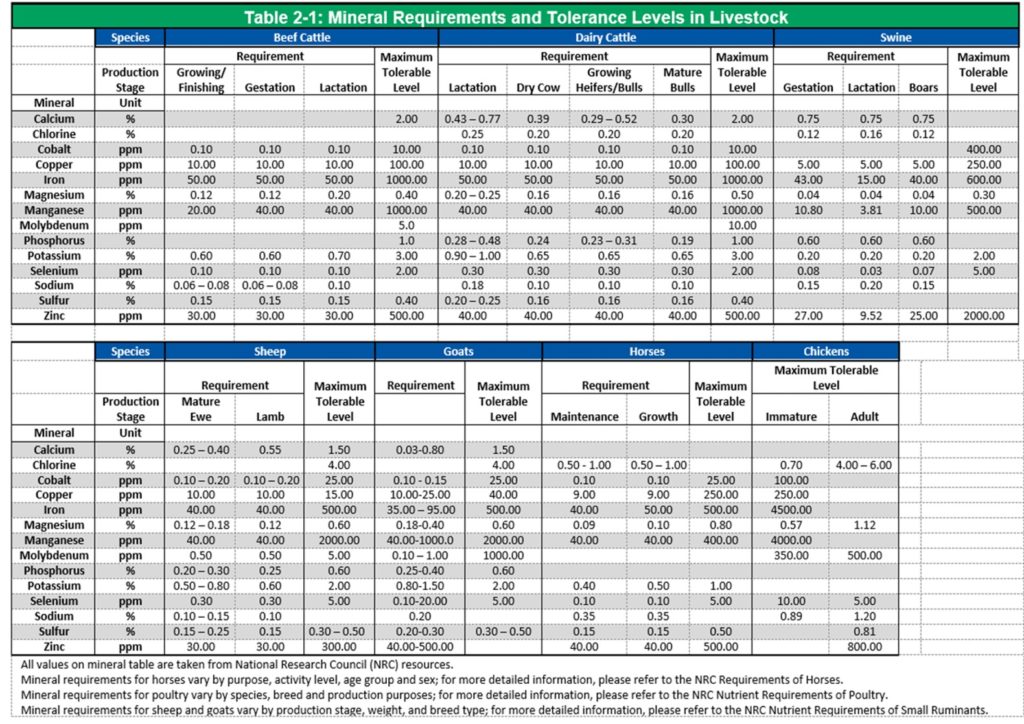
Mineral Nutrition for Grazing Ruminants
As spring continues to progress into summer, many livestock growers will move herds onto lush green pastures, and toss out a mineral supplement. But what happens if that supplement doesn’t provide balanced mineral nutrition to those animals?
The first major concern is magnesium deficiency referred to as ‘Grass Tetany’. However, that isn’t the only mineral of concern. Imbalanced mineral nutrition can result in small, but costly symptoms. Through the summer, subtle changes may occur in animals with improperly balanced mineral supplementation. Changes may be observed as a red tinge to the coat of black cattle, or under performing cattle with low weaning weights and body condition scores. In these cases producers often call me wanting to test their feed because, “something’s just not right, they aren’t doing as well as they should be.” When symptoms are difficult to describe, sub-clinical mineral deficiencies and interactions are often to blame.
There are many options for producers to choose from when it comes to mineral supplements. Walking into a feed store can be over whelming. Information about the local forage mineral contents is limited. Without knowing the mineral content of the pasture grass and the requirements of the group of animals grazing, choosing the correct supplement is a shot in the dark. Minerals also have interactions making choosing a good supplement tricky. Now add into the mix of choices mineral boluses, and drenches. It definitely makes for a hard decision for producers.
Before moving animals to pasture, create a plan for sampling forage and analyzing for mineral content. Pasture lands should be sampled to imitate the way animals graze. Your best attempt will never exactly match the diet the animal is consuming, but it is closer than random sampling.
Once you have gathered forage samples. Send them to Ward Laboratories, INC. and request the NIRS package plus minerals package. The recommended analysis costs $30.25 and will show you the protein, energy and mineral content of the forage.
The protein and energy requirements of grazing species should be compared to the analysis to determine if any additional supplementation is necessary. Mineral requirements and toxicities of cattle, sheep and goats can be found on Table 2-1 of the Ward Guide. By comparing these values to those on the feed report, producers can make an informed decision about which mineral supplement to choose and how much needs to be offered.

Once livestock are on pasture with supplement, it is important to monitor consumption to ensure over or under consumption is not occurring. Over consumption may indicate that there is a deficiency not being met by the supplement. Recheck sample analysis results and feed tag to ensure a mineral supplement was chosen to match the available forage. Under consumption may indicate that there is a palatability issue. Proper mineral supplementation can save a producer money by avoiding over consumption of expensive mineral mixes. Proper mineral supplementation can also ensure animals perform as expected thereby bringing in economic value in the sale barn.
Animal health and performance take a hit when mineral nutrition is not made a priority. Through knowledge of animal requirements, grass mineral analysis and feed tags, proper mineral nutrition of grazing ruminants can be achieved.
